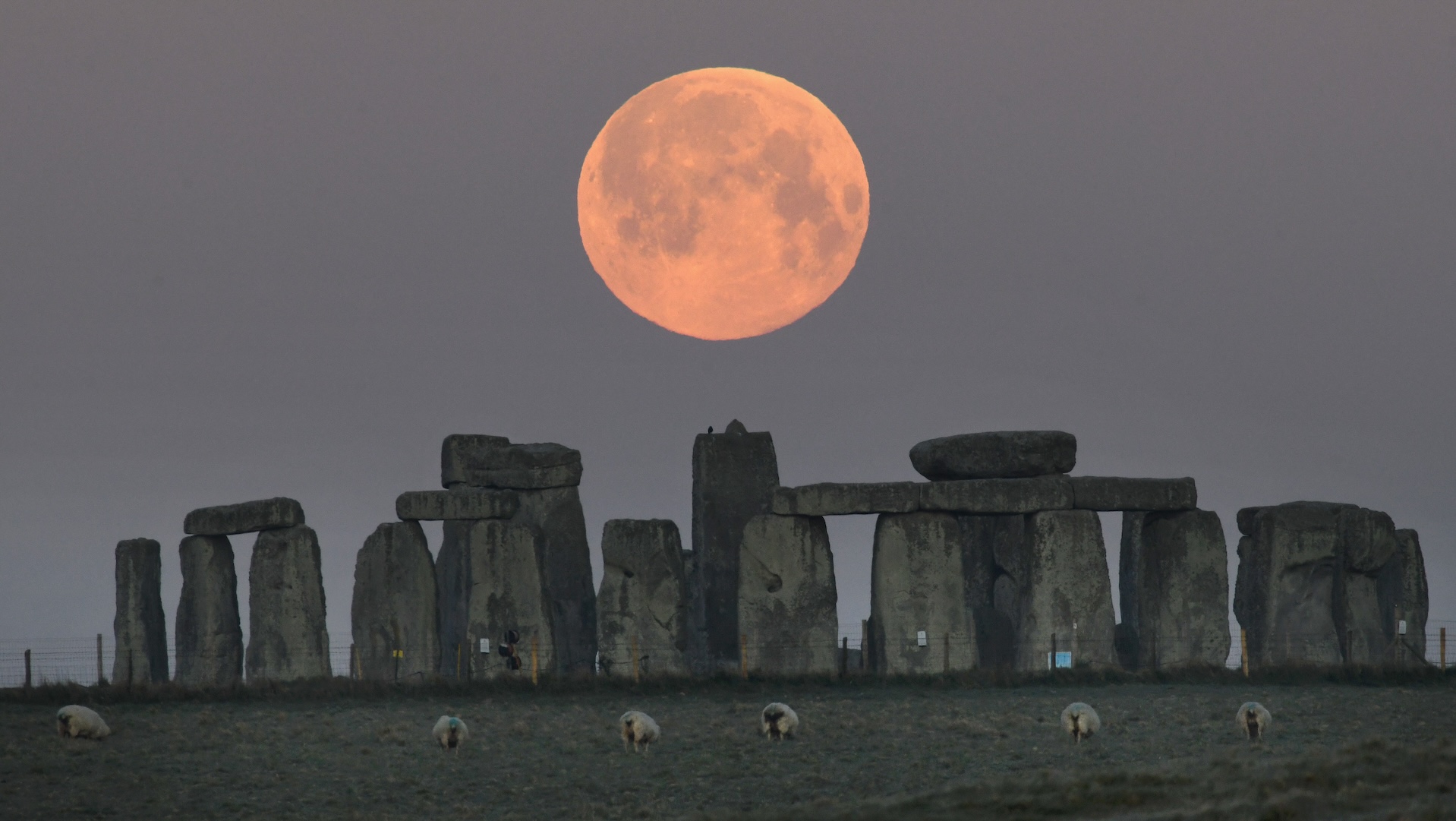
Stonehenge has aligned with the sun on the solstices for thousands of years, but is it possible that it also aligns with the moon? A once-in-a-generation event, known as a "major lunar standstill" is now underway, and scientists are ready to investigate whether ancient people built the monument to align with our natural satellite.
A major lunar standstill occurs every 18.6 years, when the moon rises and sets at a more northerly and southerly place along the horizon than usual, according to a statement from the Royal Astronomical Society. What's more, from our perspective on Earth, the moon will reach higher altitudes in the sky than the summer sun and lower altitudes than the winter sun.
This unique moon cycle is taking place this year and into 2025. "It's a long cycle. Archaeologists haven't had that many opportunities to study it [at Stonehenge]," Jennifer Wexler, senior properties historian with a speciality in prehistoric sites at English Heritage, an organization that oversees historic sites in England, told Live Science.
Related: Was Stonehenge an ancient calendar? A new study says no.
Stonehenge has gone through many phases of building and rebuilding, starting in about 3000 B.C. with the construction of a large, circular ditch that had an inner and outer bank and two entrances. On the inner circle within this monument, archaeologists have found 56 pits, dubbed Aubrey Holes for John Aubrey, a 17th-century antiquarian who first described them. It's possible the Aubrey Holes once held upright timbers or stones. But some hold cremation burials, as do other locations within Stonehenge. Strangely, many of the cremations are found in the southeastern part of Stonehenge, near three pits that likely once held timber posts, and which appear to align with the southerly moonrise of a major lunar standstill.
It appears that these southeastern burials, both in the Aubrey Holes and around them, remained meaningful, because in about 2500 B.C., when the famous large stones were initially placed, ancient builders put down the so-called four Station Stones in this spot. The long axis of the rectangle these stones form may align with the most southerly rising point of the moon, according to the statement.
"Stonehenge's architectural connection to the Sun is well known, but its link with the Moon is less well understood," Clive Ruggles, professor emeritus of archaeoastronomy at the University of Leicester, said in the statement. "The four Station Stones align with the Moon's extreme positions, and researchers have debated for years whether this was deliberate, and — if so — how this was achieved and what might have been its purpose."
Ancient people may have viewed the major lunar standstill as a sacred time, as they "would have been so much more aware of the sky than we are now," Wexler said. "These people also would have also been early farmers, so understanding these cycles would have been extremely important to them."
Perhaps people told their children or grandchildren about the moon's unique placement, she said. "It might have been part of the ancestral connection to Stonehenge as a place."
During observations of the major lunar standstill at Stonehenge, researchers with Historic England, Oxford, Leicester and Bournemouth universities and the Royal Astronomical Society will examine different aspects at the site.
"We want to understand something of what it was like to experience these extreme Moonrises and sets," Amanda Chadburn, an archaeologist at the University of Oxford's Kellogg College, said in the statement, "and to witness their visual effects on the stones (for example, patterns of light and shadow), and consider modern influences like traffic and trees, and to document all of this through photography for future study."
Through 2024, the public is invited to Stonehenge for various events, including a pop-up planetarium, lectures and an online-only livestream of the southernmost moonrise at Stonehenge in June. The researchers are also collaborating with a team at Chimney Rock, Colorado, the site of a Chacoan settlement that may also align with the moon during the major lunar standstill.
Editor's Note: This was updated at 9:38 a.m. EDT on May 7 to note that the livestream of the moonrise in June is online only. There will be no in-person event.







